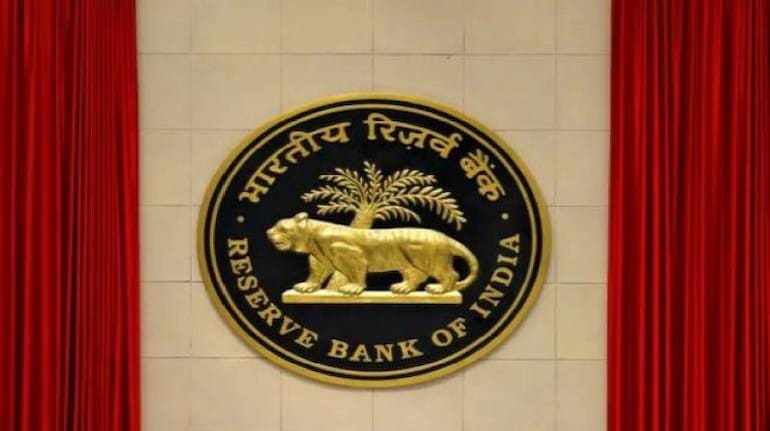



The Reserve Bank of India (RBI) is likely to stay put in the June monetary policy on the back of a lower inflation print in April and a higher-than-expected Gross Domestic Product (GDP) growth rate in the January-March quarter, economists said. The monetary policy committee (MPC) is set to convene on June 6 for a three-day meeting.
However, a rate cut is not still not in sight, said economists.
"Given the MPC’s hawkish tone in the April 2023 policy and the changed wording of the policy stance to sharpen the focus on the 4 percent target for inflation from the range of 2-6 percent, we believe that a pivot to rate cuts appears quite distant, said Aditi Nayar, Chief Economist, Head – Research & Outreach, ICRA Ltd.
According to Gaura Sengupta, India economist, IDFC First Bank, the central bank may maintain a prolonged pause till December 2023 considering the steller growth in the GDP print.
“Despite the large quantum of rate hikes and faster transmission (post the external benchmark regime), growth recovery has been resilient,” said Sengupta.
In the April monetary policy, the RBI surprised everyone by keeping interest rates unchanged. The MPC kept the repo rate unchanged at 6.50 percent in April, after raising it by 250 basis points (bps) from May 2022.
One basis point is one hundredth of a percentage point.
In the January-March quarter, India's Gross Domestic Product (GDP) growth rate rose for the first time in three quarters to 6.1 percent.
Also read: RBI should change its stance to neutral: CII President R Dinesh
Inflation easingIndia's headline retail inflation rate dropped sharply for the second month in a row, hitting an 18-month low of 4.70 percent in April.
Recently, RBI Governor Shaktikanta Das, while speaking at an event, said the lower inflation numbers had given the RBI a reasonable amount of confidence that monetary policy is on the right track.
Considering these comments and data shown on the inflation and growth front, economists believe the central bank will maintain the pause in the June policy as well.
Growth factorThe GDP growth rate rose for the first time in three quarters on the back of investment and net exports, while private consumption remained weak, a report by Kotak Mahindra Bank said.
According to the report, better growth numbers indicate that the Indian economy is not slowing down as predicted by several economists earlier.
Anurag Balajee, Economist – Senior Manager, Kotak Mahindra Bank, expects that growth in the first half of FY24 will be stronger due to the expectations of steady growth.
However, in the second half of FY24, demand conditions will cool on a likely global slowdown, with domestic demand weighed down by the lagged impact of the MPC’s rate-hike cycle and risks of a weak monsoon weighing on the rural sector, he said.
Also read: Must sustain fiscal consolidation to rebuild policy buffers, ensure debt sustainability, RBI says
Inflation reliefThe April CPI inflation print reading of 4.70 percent provides a strong start to the RBI's inflation forecast of 5.1 percent for the April-June quarter.
The RBI expects CPI inflation at 5.2 per cent for 2023-24, with Q1 at 5.1 per cent, Q2 at 5.4 per cent, Q3 at 5.4 per cent and Q4 at 5.2 per cent, and risks evenly balanced.
The expectation of moderation in inflation will get support from the higher base effect in the first half of 2023-24. However, while the base effect will be favourable until October, it peaks in April.
If CPI inflation evolves as per the RBI's forecast, the MPC may not hike the repo rate any further, experts believe.
“ICRA expects CPI inflation to ease further to 4.5-4.7% in May-June 2023, with a Q1 FY2024 print of 4.7%, well below the MPC’s projection of 5.1% for that quarter,” Nayar added.
However, Upasna Bhardwaj, Chief Economist, Kotak Mahindra Bank, said food inflation risks are skewed to the upside from adverse weather events, even as the IMD has projected normal rainfall in June-September. Upside risks from imported inflation remain, amid a tight oil market and risk-off from global financial market turmoil.
Factors to watch for in the June policyAccording to the experts, the key thing to be watched for in the policy is the RBI’s stance.
Pankaj Pathak, Fund Manager- Fixed Income, Quantum AMC, pointed out that until last year, the monetary policy was ultra-accommodative, with the policy repo rate significantly below normal levels and the banking system flooded with liquidity.
Now, the repo rate of 6.5 percent is very close to its long-term average. Liquidity is still in surplus, but it has come down to a level that can be taken as close to normal and as non-inflationary, he said.
“So, there is a strong case for the RBI to retire the phrase “withdrawal of accommodation”, Pathak said.
He added that the RBI’s decision on its stance would be more dependent on managing the market perception rather than inflation and the liquidity outlook.
Also, market dealers expect some insights on the liquidity in the banking system from the RBI in the monetary policy.
Additionally, the central bank’s inflation projection will be a key point to watch for in the monetary policy.
Discover the latest Business News, Sensex, and Nifty updates. Obtain Personal Finance insights, tax queries, and expert opinions on Moneycontrol or download the Moneycontrol App to stay updated!
Find the best of Al News in one place, specially curated for you every weekend.
Stay on top of the latest tech trends and biggest startup news.